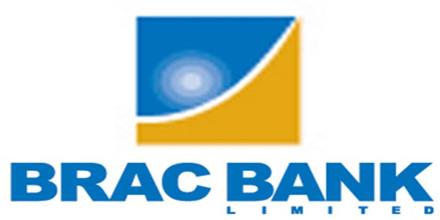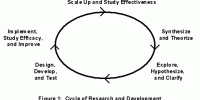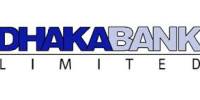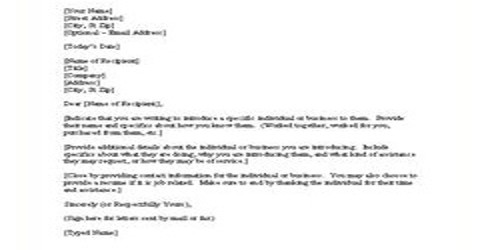Major objective of this report is to analysis Third Generation Banking Facilities and Customer Service Delivery of BRAC Bank Limited. Report discuss on various banking facilities like Small and Medium Enterprise (SME) Division, Retail Banking, Corporate Banking and Treasury division etc. Also discussion on Customer service like Quality of service, Value of innovative solutions, Level of trust with our clients etc.
Introduction
BRAC Bank Ltd is a creation of BRAC. BRAC Bank Limited, a scheduled commercial bank established under the Banking Company Act, 1991 and incorporated as a public company limited by shares on May 20, 1999 under the Companies Act 1994 in Bangladesh. The banks has started its operation on 4th of July 2001 with a vision to be the market leader through providing all kinds of banking services suitable to the dynamic demands of both business and individual in the competitive market.
BRAC Bank has embarked with an avowed policy to provide “best-in-the-class” services to its diverse range of customers spread across the country based on latest information technology. To keep in tied with its sponsor, BRAC’s goals, the bank endeavors to provide mass financing especially to focus on under-served enterprises across the rural – urban area. The bank focused on relationship based Banking, as it believes that the pursuit of profit and developmental goals are mutually reinforcing. This focus makes the bank to emphasize more on to explore and access market opportunities as well as build asset base to its clients conforming significant contribution to the profitability of the Bank.
Capital Structure and Equity Partners
BRAC Bank has started with an initial capital of amount BDT 250 million, while the authorized capital is BDT 1,000 million. Over time the bank has increased it capital base because of its steady growth and within three years of operations, it has doubled its capital base to BDT 500 million. The Bank has planned to go public by the last quarter of this year (2005) and raise it’s paid up capital to BDT 1000 million. BRAC Bank originated with Local and International Institutional shareholding including BRAC as promoter with IFC and Shore Cap International, UK. Here is the break-up of BRAC Bank’s shareholdings positions.
Table: Share Distribution
| Name of Shareholders | No.of Shares | Amount (Tk.) | (%) of Shareholding |
| BRAC | 3,173,900 | 317,390,000 | 63.48% |
| Shore Cap | 875,700 | 87,570,000 | 17.51% |
| IFC | 949,800 | 94,980,000 | 19.00% |
| Others | 600 | 60,000 | 0.01% |
| Total | 5,000,000 | 500,000,000 | 100.00% |
Source: BBL head office
A short description of its shareholders is given below.
BRAC, the main sponsor of BRAC Bank Limited, a well-established and prominent NGO with a large presence in the rural and urban areas of Bangladesh. The current activities of BRAC are particularly focused in three areas: education, health care, and micro-finance. BRAC already has extensive experience in the micro-credit market with 2.4 million customers, and a substantial portfolio of approximately US$270 million of performing loan assets. BRAC’s experience dates back over 25 years during which it has achieved excellence in most of its targeted activities.
The International Finance Corporation (IFC) is a member of the World Bank Group, is the largest multilateral source of loan and equity financing for private sector projects in the developing countries as a way to reduce poverty and improve people’s lives.
Shore Cap International an affiliated non-profit organization, Shore Cap International, will provide technical assistance to help investor institutions establish profitable and effective small business and micro-lending programs. It will invest capital in and advise local regulated financial institutions that make small and micro-business loans in developing and transitional economies.
Retail Banking
BRAC Bank is also trying to be leader in retail banking in Bangladesh. The division targeted middle to top class citizens as their customer. The main activities of this department are to find out new channel for increasing both of its assets and liabilities simultaneously maintaining relationship with the existing clients. At present this division offers full fledge of services including different types of personal loans to deposit schemes along with value added services like ATM and Credit Card (introducing soon).
Corporate
Like Retail, corporate department has also two different wings. First wing called TRS and other is Corporate Banking division.
TRS
TRS & SRS is basically deals with corporate deposits. They collect deposits from various corporate houses across the country. This department contributes almost 41% of BBL’s total deposit mix.
Corporate Banking Division
Corporate Banking is a specialized area of BRAC Bank, which addresses the diverse financial needs of Corporate Clients.
This division exists to provide banking services and financial partnership with local and foreign business houses (Public and Private Limited Companies), NGO’s, trading houses, joint ventures and various government bodies/corporations etc. As the financial partner of choice for the corporate sector, BRAC Bank is distinguished by its:
- Quality of service
- Value of innovative solutions
- Level of trust with our clients
- Customer knowledge
Corporate clients can access a wide range of financial services offered by corporate banking division including:
- Debt Capital
- Equity Capital
- Ongoing relation support
- Financial Markets
Products
BRAC Bank provides a comprehensive range of innovative corporate financial solutions tailored to suit each company’s needs. This range includes both funded and non-funded facilities. Following are some of the products that BBL offers to its clients:
Corporate Finance
- Loan Syndication
- Project Finance: Short and Medium term
Finance/Credit Extension
- Overdrafts
- Demand Finance
- Working Capital Finance
- Receivable Discounting
- Pre and Post Export Financing
- Short-term loan: revolving loans, LATR etc.
Trade
- Letter of credit: Sight, Unsance etc.
- Guarantee: Performance, Security, Advance Payment etc.
Lease financing
Corporate Portfolio
Corporate holds 24% of BBL’s total assets portfolio. Up to the financial year 2004 this division distributes BDT 1375m, which enjoys almost 120.71% growth compare to previous year. Its assets portfolio covers almost all the major industrial areas. NBFI (19.15%), Textile (17.88%), Food and Agro (10.21%) and Steel (9.87%) are the major areas of its portfolio. Noticeably Corporate does not have any presence in RMG sector, the biggest industrial sector in Bangladesh.
Treasury
Treasury division at BBL deals with the fund position. This division calculates and projects the fund requirement to meet day-to-day operation. It has also two wings, one is front office and the other is back office. Front office deals with directly to the money market of the country. Their main job is to lend money to other financial institution on call or short-term basis, if the bank has additional money idle.
Financial Performance Analysis
BRAC Bank is seen the fast growing private commercial bank across the country. It has earned an incredible growth of 130% in the year 2004 over previous year’s (2003) performance. It has excelled almost over all the area in this period. Here is some of its outperforming analysis.
Table: Performance at a glance (old)
| Particulars | 2004 | 2003 | Growth |
| Paid up capital | 500,000 | 405,020 | 23.45% |
| Total Capital including general provisions | 650,294 | 424,327 | 53.25% |
| Capital Surplus/deficit | 73,684 | 157,178 | -53.12% |
| Total Assets | 10,015,936 | 4,542,043 | 120.52% |
| Total Deposits | 8,168,979 | 3,497,303 | 133.58% |
| Total Loan & Advances | 5,819,792 | 2,870,107 | 102.77% |
| Total contingent liabilities & Commitments | 292,056 | 34,352 | 750.19% |
| Credit Deposit Ratio | 71.24% | 82.07% | |
| Classified loans against total loans and advances (%) | 1.97% | 1.06% | 85.85% |
| Profit after taxes & provisions | 99,303 | 30,281 | 227.94% |
| Amount of classified loans during the current year | 114,414 | 30,542 | 274.61% |
| Provision kept against classified loans | 84,432 | 8,183 | 931.80% |
| Provisions surplus/deficit | 40,841 | 173 | 23507.51% |
| Cost of fund | 7.23% | 7.50% | -0.27% |
| Interest earning assets | 9,735,349 | 4,475,543 | 117.52% |
| Non interest earning assets | 280,587 | 66,501 | 321.93% |
| Return on Investment (ROI) | 8.57% | 3.73% | 129.76% |
| Return on Assets (ROA) | 0.99% | 0.67% | 47.76% |
| Return on Equity (ROE) | 16.83% | 7.65% | 120.00% |
| Incomes from investments | 166,967 | 94,790 | 76.14% |
| Earnings per share | 23.16 | 12.09 | 91.56% |
Source: BBL Head Office
Performance (New)
Year-to-Year Growth
| Particulars | 2004 | 2005 | Growth |
| Loans & Advances | 5820 | 11791 | 103% |
| Deposits | 8169 | 13458 | 65% |
| FUM | 13989 | 25249 | 80% |
| Interest Income | 983 | 3030 | 208% |
| Interest Expense | 441 | 2118 | 380% |
| Net Interest Income | 542 | 912 | 68% |
| Non Funded Income | 138 | 273 | 98% |
| Total Revenue | 680 | 1185 | 74% |
| Staff Costs | 176 | 310 | 76% |
| Other Operating Costs | 182 | 283 | 56% |
| Total Operating Costs | 358 | 593 | 66% |
| Total Profits | 322 | 592 | 84% |
| Debt Charges | 111 | 252 | 128% |
| PBT | 211 | 340 | 61% |
Source: HRD of BBL, from the booklet of Newsflash
Balance Sheet Performance
During the year, BBL has expanded their business rapidly and undertook significant operations in trade finance business (i.e. 750% growth in the year 2004 over last year) along with the same upward trend in SME, commercial and retail lending activities. Propelled by strong growth in both loans and deposits, the Bank’s operating income increased substantially in 2004.
BBL has a 134% growth rate on its deposits in the financial year 2004 comparing to its previous year’s (2003) and the same time it also has a 103% growth arte over its loans and advances. Though the advance to deposit ratio i.e. 71.24% is comparatively comedown, but the parallel growth trend has made BBL comfortable with the ratio. These upward trends in both deposit and loans, helps the bank to increase its assets by 121% over its previous year’s (2003) assets. BBL has also enjoyed higher growth rate on its fixed and other assets (312% and 266% respectively) than loans or investments.
Profitability
In the year 2004 the bank has earned an operating profit of BDT 318.28 million compared to BDT 56.56 million in the previous year with a stunning growth rate of 463%. This was possible, as BBL has earned a 165% growth on its interest income where as its interest expense growth was 93% from the year 2003. This difference has basically occurred due to decrease in its cost of fund but simultaneously increase trend in return from its loan.
The growth rate of operating expenses has also gone up by 103%, but this trend is acceptable because the bank has earned growth rate of over 100% in all aspects. More over a growth of amount 228% in its profit after tax supports the rationality of such hike in operating expenses earned.
All this upward trends help BBL to almost double its earning per share (BDT 23.16 per share which was only BDT 12.09 per share in the year 2003) within one year.
Key Performance Indicator
Capital Adequacy: Capital adequacy focuses on the total risk weighted capital intended to protect the depositors from the potential shocks of losses that a bank might incur. In the year 2004 BBL has maintained capital adequacy ratio of 10.15% against standard of minimum 9.00% set by Bangladesh Bank.
Asset Quality: The asset composition of BBL shows a high proportion of loans and advances (63.13%) in total assets. A high proportion of loans and advances indicate vulnerability of assets to credit risk, since the portion of non-performing assets is significant in our country. But the classified loans against total loans and advances of BBL are only 1.97%. Though this ratio gone up by 86% from the year 2003, but compare to 103% increase in loans and advances this upward trend is still in acceptable level.
Management Soundness: Management Soundness is very difficult to measure because it requires a qualititative measurement rather than quantitative measurement. Nevertheless ratios such as total expenditure to total income are generally used to measure management soundness. In this regard BBL’s total expenditure to total income ratio is 53%, which shows that more than half of its total income need to expend for meeting operating expenses
Earnings and Profitability: Strong earnings and profitability profile of a bank reflect good health and its ability to support present and future operations. In the year 2004 BBL earned 16.83% return on equity (ROE) with a growth of 120% over last year. Where as return on assets increased in the year 2004 is 0.99% with a growth of 48%. Growth of ROA is comparatively lower than ROE or ROI (8.37% with a growth of 130%) because of increase in non-interest earning assets (322% growth rate in 2004) as BBL invested a lot in fixed assets (312% growth) in the year 2004.
Liquidity: At present BBL’s liquidity ratio is 24% out of Bangladesh Bank’s minimum requirement 20%. So the bank may feel comfort but the liquidity statement shows that for short period usually 1-3 months BBL has liquidity gap or in other words, for short period, the bank has a short fall to meet its liquidity.
How we are different
BBL is different from other banks for the following reasons,
- Mobilization of Fund from Urban to Rural Area
- Institutional Shareholding
- Pioneer in SME Banking
- Creation of Job opportunities
- Dividends are refinanced for poverty alleviation
- Market leader in SME Financing
- Real time Online Banking from its inception
- Centralized Banking
- Business unit are separated from operation
- Largest no. of Retail Products
- Educate rural people to use Banking service
- Fastest in Remitting Expatriates Fund
Internal Analysis of BBL
SWOT is an acronym of an organization’s strengths, weaknesses, opportunities and threats. The underlying assumption of SWOT analysis is that managers can better formulate a successful strategy after they have carefully reviewed the organization’s strength and weaknesses in light of the threats and opportunities, presented by the environment. With my little experience I would like to mention the SWOT of BRAC Bank Ltd. Bellow:
Strengths:
- Brand name (BRAC) reputation.
- Adequate financial resources as BRAC’s reputation as a financially sound organization.
- Fastest expanding distribution network comprising Branch, unit office, ATM etc.
- Emerged with the concept of modern and technology based banking system.
- Pioneer in SME financing.
- Product innovation skills.
- Better advertising campaign
Weakness:
- Limited Branch Network.
- Weak brand image to the anti-NGO group of people.
- Unacceptability of BRAC Bank as a commercial bank to the remote rural people.
- Full commercial banking service not yet providing.
- Relatively newly established bank.
- Not yet to the public.
- Relatively low salary structure for entry level position.
Opportunities:
- Grab the opportunities of untapped SME market.
- Enter new segments such as middle and lower middle income group.
- Customize product line to meet broader range of customer needs.
- Leverage BRAC Bank’s countrywide networks.
- Exclusive market leader in remittance service with the help of BRAC Bank’s wide range of unit offices.
- Faster market growth.
- Fulfill customer need providing more IT supports.
Threats:
- Entry of foreign competitors.
- Saturated product line by competitors
- Non-banking financial institutions are increasing with diversified products.
- Relatively higher salary is offered by competitors that can motivate personnel to leave BRAC Bank.
- Job quitting tendency of lower level personnel due to unsatisfactory compensation package in comparison with their work pressure.
Brand Ambassadors
The brand ambassador for BBL is Mr. Dav What more, Coach Bangladesh National Cricket Team and all the employees of the bank.
Performance Appraisal System
General
An organization generally establishes and maintains a formalized system of appraisal and documentation of classified employee job performance including recognition of and response to individual developmental needs. This process is designated as the Performance Appraisal System. The objectives of the System are to:
- Provide employees with a sense of their work accomplishments relative to expectations and predefined performance indicators.
- Support employee development through discussion of assigned opportunities and training.
- Emphasize the Institute’s commitment to continuous improvement and learning.
- Encourage an appropriate relationship between pay levels and work performance.
- Avoid surprises; keep lines of communication open.
- Provide the option to document performance in a narrative format relative to specific accomplishments during the review period.
Features of Performance Appraisal
- Performance appraisal is a process, not a form. It structures your relationship with employees while providing legal protection for your company.
- A good appraisal system includes observation, documentation, and communication.
- A performance evaluation system can provide many benefits: It can improve employee performance and morale, identify poor performers and ways they can improve, and lay the groundwork for legally defensible discipline and termination.
- A manager’s attitude is a key ingredient in whether a performance appraisal system will succeed. If the manager is enthusiastic about the chance to work with employees to improve their performance and their work experiences, the employees will share that enthusiasm.
- A good evaluation system includes support, motivation, communication, collaboration, fair treatment, documentation, formality, and accountability, and is consistent with the company’s core values and purpose.
- Managers should use evaluation systems to improve future performance, not punish employees for poor past performance.
- Employees must participate in every aspect of the evaluation process. Bringing employees into the loop, giving them power and responsibility for directing and assessing their own performance will increase their job satisfaction and engender their trust in the process.
- Managers must give ongoing feedback, not just at the year-end meeting. Managers must document employee performance as it occurs throughout the year.
- While communicating negative information is difficult, not communicating it can be much worse.
Training and Development
Performance appraisal offers an excellent opportunity – perhaps the best that will ever occur – for a supervisor and subordinate to recognize and agree upon individual training and development needs. During the discussion of an employee’s work performance, the presence or absence of work skills can become very obvious – even to those who habitually reject the idea of training for them! Performance appraisal can make the need for training more pressing and relevant by linking it clearly to performance outcomes and future career aspirations.
The Appraisal Process
In order to effectively administer the performance appraisal process, it is imperative that employees understand their job expectations and the way in which those expectations relate to the performance indicators outlined above. This can be accomplished through direct, ongoing communication between supervisor and subordinate.
Performance expectations should be communicated at the beginning of the review period and reinforced periodically during that period. Additionally, it is encouraged that the supervisor review the performance indicators used in the appraisal process and they ways in which they relate to job expectations. In this way, the employee will have an ongoing perception of the level of performance he or she is delivering and the basis upon which that performance will be rated. This will avoid the “surprise” factor often associated with performance appraisal system.
Performance Appraisal Means evaluating an employee’s current and past performance relative to the person’s performance standards.
Appraisal involves: Setting work standards assessing the employee’s actual performance relative to these standards. Providing feedback to the employee with the aim or motivating that person to eliminate deficiencies or to continue to perform above par.
This ongoing performance appraisal process involves communication about goals/duties; it seeks to foster a culture of quality employee performance appraisals and continuous improvement through performance reviews with a focus on internal and external customer services.
Employee appraisals and also employee performance evaluation includes feedback from direct reports, peers, and/or customers that is intended to help employees improve and develop their performance. These employee review program with employee evaluation forms designed so that employees are aware of what is expected of them, receive timely feedback about their performance, and receive recognition in a fair manner.
Performance Appraisal In respect of Purpose, Application & Provisions
Purpose, Application and General Provisions
This procedure establishes a process for appraising the performance of staff and administrators at Chapman University. Performance Appraisals have the following objectives:
- Encourage continuing supervisor-employee communications about job-related and professional matters. Forms of communication include coaching, counseling, training and feedback on job performance.
- Provide a means whereby the supervisor and employee may establish workplace goals and objectives.
- Provide guidance for employees on professional and job development.
- Provide a means for supervisors to recommend employees’ salary increases based on merit and job accomplishments.
This procedure applies to staff and administrative employees who have achieved “regular employment status” and who occupy positions other than “temporary”.
All supervisors and employees are required to participate in the appraisal process at least annually. Salary merit increases may occur only after the completion of the performance appraisal process.
Conducting Performance Appraisal
- At the end of the appraisal period, the supervisor will ask the employee to complete the employee’s self-appraisal portions of the appraisal form. The supervisor in turn will complete the supervisor’s portions of the form.
- Supervisor and employee then will meet to review and discuss the appraisals, the respective “ratings”, the employee’s accomplishments and any problems the employee has experienced in achieving the goals and objectives established at the beginning of the appraisal period.
- The supervisor will coach or counsel the employee on performance enhancement or improvement techniques, especially if performance problems have occurred during the reporting period. Several meetings may be needed to reach mutual understanding and, if possible, agreement.
- The supervisor and employee will re-initiate the appraisal cycle by mutually discussing goals, objectives and standards for the coming year.
- The supervisor and employee then will sign the appraisal form. The supervisor will provide the employee with a copy of the form and forward the original to the Vice Presidents, Dean of Students, Dean of Enrollment or the Dean, College of Lifelong Learning as appropriate. Both the employee’s and supervisor’s ratings and comments must be forwarded.
- The Vice President, Dean of Students, Dean of Enrollment or the Dean, College of Lifelong Learning will forward the performance appraisal form to the Human Resources Department where it will be filed in the employee’s personnel records.
Why Essential; Performance Appraisal
Performance appraisals are essential for the effective management and evaluation of staff. Appraisals help develop individuals, improve organizational performance, and feed into business planning. Formal performance appraisals are generally conducted annually for all staff in the organization. His or her line manager appraises each staff member. (Directors are appraised by the CEO, who is appraised by the chairman or company owners, depending on the size and structure of the organization). Annual performance appraisals enable management and monitoring of standards, agreeing expectations and objectives, and delegation of responsibilities and tasks. Staff performance appraisals also establish individual training needs and enable organizational training needs analysis and planning. Performance appraisals data feeds into organizational annual pay and grading reviews, and coincides with the business planning for the next trading year. Performance appraisals generally review each individual’s performance against objectives and standards for the trading year, agreed at the previous appraisal meeting.
Performance appraisals are also essential for career and succession planning. Performance appraisals are important for staff motivation, attitude and behavior development, communicating organizational aims, and fostering positive relationships between management and staff. Performance appraisals provide a formal, recorded, regular review of an individual’s performance, and a plan for future development. In short, performance and job appraisals are vital for managing the performance of people and organizations.
Creating A Non-Threatening Atmosphere to Give Feedback
There are a number of ways in which giving feedback can be made less threatening to the employee:
- Be descriptive rather than judgmental.
- Be supportive rather authoritarian.
- Treat the employee as an equal rather than an employee.
In addition, making the discussion relaxed but professional can also help to keep the conversation non-threatening. This can be done by ensuring the flowing.
- Reviews start on time Lateness is being impolite to your employees and suggests than the review is less important than other work.
- Be flexible where possible On certain areas such as safety, performance standards etc. You may not have room to be flexible, but where the issues are non critical, be prepared to give some ground so that the discussion involves agreement rather than imposition.
- The employee does at least half of the talking Involve the employee in the discussion using open questions i.e. Questions that do not produce a yes or no response, wherever possible.
- Listed! Don’t interrupt with “Yes…but” comments. It is a sure sign that you are thinking about your own agenda and NOT listening.
Creating A Non-Threatening Atmosphere to Give Feedback
Always try and observe the following when receiving formative feedback about your own performance:
- Listen Try not to make quick judgments or dismiss what the person is saying. Listen carefully so you understand what is being said. Never say “Yes, But….” It is a sure sign that you have not been listening.
- Clarify Check your understanding of the feedback given by summarizing in your own words what you believe the person is saying. Ask for specific examples to help clarify.
- Do not be defensive It is often tempting to explain why you acted as you did or why something did not go well. Resist the temptation, at least until the person has finished.
- Do not argue You do not have to agree with what is being said, and eventually you will make your own decision about whether you accept or reject the feedback. But don’t argue. You will only discourage that person form giving you further feedback and giving you a chance to develop.
- Reflect once you have received the feedback; spend some time thinking about what has been said.
Do I act on the Formative Feedback
Consider the following when deciding on this question:
- Has anyone else said similar things to me before?
- Does the person giving the feedback know a lot about the subject?
- Are the person’s standards unreasonable?
- Is the feedback really about me?
- Do I want to do anything about it?
- How can I use the information effectively?
Recommendations
The survey results have given valuable information as to where improvements are necessary to improve the employees’ performance of BBL. Now I recommend the following major things, which will be helpful for BBL:
- The strength of a bank depends on its employees’ performance. That’s why the authority always should be aware about the service provided by the Bank to its employees.
- Bank should offer more facilities to the employees such as bonus.
- The bank should consider the problems of employees with sympathy.
- As for loan schemes, BBL should give some more facilities to its employees.
- Long-term training very much required for the employees.
Conclusion
BRAC Bank limited is a modern commercial bank.. It is committed to provide high quality financial services / products to contribute to the growth of G.D.P. of the country through stimulating trade & commerce, accelerating the pace of industrialization, boosting up export, creating employment opportunity for the educated youth, raising standard of living of limited income group and overall sustainable socio-economic development of the country.
The Bank is operating efficiently with its existing products and services. To achieve these objectives and to contribute to G.D.P. the performance of the employees should be developed. And these performance matters should be reviewed periodically and with importance and BRAC Bank does the job very effectively and efficiently. That is the reason why the bank is growing so fast than any other local bank in our country. The bank depends on its employees and its employees depend on the Bank and thus they become a part of the Bank.
















